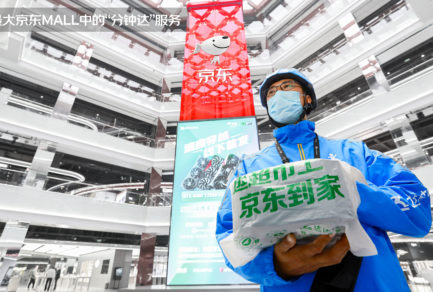Jun 1, 2021|
In-depth Report: Why, How and When about Autonomous Delivery Vehicles
by Yuchuan Wang
At the 8th International Congress of Intelligent and Connected Vehicles Technology (CICV) held in Beijing on May 25, Beijing High-level Automated Driving Demonstration Area (BJHAD) issued China’s first road test licenses for autonomous delivery vehicles. This means that autonomous delivery vehicles will be fitted with licenses for the first time. JD became one of the first three enterprises in China to obtain the qualification, along with Meituan and Neolix.
Dr. Qi Kong (in red), chief scientist and head of JD’s autonomous driving technology receives the license from Lei Kong, vice director of management committee of Beijing Economic Technological Development Area and head of promotion working group of BJHAD
JD debuted its first autonomous delivery vehicle in September 2016. The company revealed its 4.0 robot in 2019 following years of research and iterations, and became the world’s first company to apply Level-4 autonomous driving technology on public roads without any human interaction.
Levels of driving automation (source: synopsys.com)
As of April this year, JD has put its autonomous delivery vehicles into daily use in over 20 cities in China for the last-mile delivery of e-commerce parcels.
Intelligent last mile
Rising labor costs and the need to reduce social logistics cost is increasingly prominent in China.
According to the Sate Post Bureau, in the past decade, China’s express logistics industry has experienced rapid growth, with parcel volume surging from 2.3 billion units in 2010 to 83.4 billion units in 2020. In the same period, the working-age labor force dropped from nearly 940 million to 890 million.
China’s ratio of social logistics costs to GDP has continuously decreased from 18% to 14.2% in the past 10 years according to the National Bureau of Statistics, but it still lags behind developed countries, such as the U.S. where the figure is only 8%. Intelligent last mile delivery is an inevitable trend meaning promising opportunities for autonomous delivery vehicles.
“Technology research, industry development and the national conditions have enormously promoted China’s development in autonomous delivery,” said Dr. Qi Kong, the chief scientist and head of JD’s autonomous driving technology.
Dr. Qi Kong
Dr. Kong is a pioneer and top expert in China researching self-driving. Under his leadership, JD keeps making technological breakthroughs in the industry. The company is the first to commercially apply Level-4 autonomous driving vehicles at scale.
The vehicles will carry packages from delivery stations or supermarkets to nearby office buildings, residential compounds, school campuses and more.
JD’s autonomous delivery vehicle will automatically call the customer and send a message with pick-up code once it arrives at the pick-up point. The photo shows a customer in Changshu received her 618 order at 00:04 on Jun. 1, 2021.
In addition to satisfying consumers’ demands for instant delivery, the adoption of autonomous delivery vehicles can potentially re-allocate couriers’ working time by releasing them from parcel delivery and giving them the chance to spend more time on customer service and the maintenance of vehicles.
For example, in Changshu, over one fifth of JD’s delivery stations have used autonomous delivery vehicles for daily operations, enabling couriers to deliver 1.5 times the orders during peak sales seasons such as the 618 Grand Promotion.
Dr. Kong adopts a concept of “human-machine synergy” to enable employees to handle tasks smartly and swiftly. “Profit margins in the logistics industry are not very high. By introducing autonomous delivery, the structure of the industry and margins will be improved in the long run.”
The in-house technologies
The core of JD’s autonomous delivery robots is the autonomous driving system developed in-house.
“We designed the vehicle as a driverless one from the beginning, unlike many passenger vehicles which were transformed to be driverless,” said Dr. Kong.
Many of JD’s competitive companies mainly test robots in closed parks, rather than on public roads. For a public road where traffic conditions are more complicated, the technology must be similar to that of a robo-taxi, which uses highly autonomous driving technology for public roads.
JD’s autonomous delivery vehicle
Using AI models to integrate information from sensors such as laser radar and computer vision cameras, the vehicle can recognize and avoid obstacles. Its recognition accuracy rate for small items such as traffic cones and fences can reach 98%.
JD’s technology enables the vehicle to travel in tunnels and over bridges, as well as under various weather conditions including mid rain. When faced with complicated traffic intersections, it can intentionally plan its route.
Even under scenarios which requires such high calculation, Dr. Kong’s team is able to lower the power consumption of arithmetic logic unit to 10% of the industry average which is about 60 Watt, and is believed to be the lowest in the world for Level-4 vehicles.
Smart avoidance
“One of the most significant advantages of JD doing this is [the company’s] massive e-commerce scale and nationwide self-operated logistics network,” said Dr. Kong. He believes that the development of autonomous vehicles relies on large-scale operation to accumulate enough data to adequately train AI and realize a snowball effect.
“Looking at the industry from a global perspective, China has an advantage over other counties,” said Dr. Kong. “For example, its road conditions are much more complicated than in the U.S. which means running the same distance, the vehicle will learn more and the technology will grow faster.”
JD also researched a cloud simulation platform which accumulates historical operations data and is able to discern how the robot should behave in numerous traffic scenarios, improving the vehicle’s ability to drive safely on open roads. Its autonomous delivery vehicle management platform can enable one staff member to supervise as many as 50 vehicles in operation at the same time, to handle unexpected situations. “The number could be increased to 100 along our continuous improvement of the technology,” said Dr. Kong.
JD is currently entitled to over 400 patents in the field of unmanned delivery, covering the aspects of environment sensing, high resolution mapping, simulation, operating system, design and more.
Pioneers and policies
Audi announced the launch of its Level-3 Traffic Jam Pilot system for its A8 series as early as 2017, but the absence of regulation as well as safety concerns among stakeholders involved in the discussion made the manufacturer abandon the system.
Compared with the swift development of autonomous driving technology, regulations concerning the use of these devices have yet to be finalized and announced. Autonomous vehicles cannot departure from mature business models and accumulated operations experience. Their application must rely on the establishment of relevant regulations.
In the U.S., as early as in 2011, the State of Nevada legislature passed a law to authorize the use of automated cars. In 2017, the United States House of Representatives approved the SELF-DRIVE act.
China has not yet enacted laws considering autonomous vehicles. The Chinese government did however invest a number of efforts to promote the development of the self-driving industry.
According to the report by Nanfang Metropolis Daily, by Oct. 30, 2020, 21 cities in China had announced self-driving test policies and 60 enterprises had gained road test plates.
In Feb. 2020, China released the Strategies for Innovation and Development of Intelligent Vehicles, which outlined the goal to achieve the scalable production and application of Level-3 cars by 2025 and fully establish an ecosystem for autonomous vehicles between 2035 and 2050.
In May, China’s first trail rules on autonomous delivery vehicles was carried out by Beijing High-level Automated Driving Demonstration Area (BJHAD) on the 8th CICV.
According to Lei Kong, vice director of management committee of Beijing Economic Technological Development Area and head of promotion working group of BJHAD, the trial rules will:
- Explore the traffic rules for such vehicles and manage them referencing the right of way of non-motor vehicles
- Regulate the vehicle standards for road operation in terms of its size, load, speed, power and other specifications
- Explore innovative business models such as unmanned retail
- Innovate the supervision model
- Explore insurances for new technology and products such as regulate the insurance for autonomous delivery vehicles
With the worldwide promotion of autonomous delivery vehicle road tests and commercialization, represented by pioneer companies such as JD Logistics in China and Nuro in the U.S., the industry needs systematic management policies to guide future implementation and business development.
“It will provide more space and opportunities for the industry to grow,” said Dr. Kong. “JD will proceed with larger scale road tests and commercial operations on public roads which will accelerate our technology advancement to provide experienced intelligent delivery service to customers.”
The game changer
The pandemic has accelerated the commercialization of autonomous delivery vehicles. In February 2020, JD’s autonomous delivery robot was put into use in Wuhan, the epicenter of the COVID-19 outbreak in China, to ensure contactless delivery to hospitals and residential compounds. The robot traveled over 6,800 kilometers and delivered more than 13,000 packages.
According to Kong, autonomous delivery can be applied in last mile scenarios far beyond the logistics industry.
“There are many demands, such as food delivery, that can be satisfied through an autonomous delivery network. This network is not just about providing value to one company, but rather can benefit society as a whole.”
JD’s autonomous delivery vehicles are already being used to deliver fresh produce from supermarkets to residential compounds in Yizhuang, Beijing. Rakuten, the retail giant in Japan, also adopted JD’s vehicles to deliver convenience store orders in Tokyo.
In addition, the cost for unmanned delivery vehicles has also been lowered with the development of technology. According to Dr. Kong, the cost for laser radars has decreased from tens of thousands of US dollars in 2016 to a few thousand RMB now.
“With the increase in production capacity, the cost of each JD autonomous delivery vehicle could be as low as RMB 60,000 to 80,000 yuan in the near future,” said Dr. Kong.
Eventually, autonomous delivery vehicles will become a part of the city’s infrastructure, “like subways,” said Kong. They will lead the transformation in urban supply chain, and even reshape the retail industry. “One thing is for certain – it will make the entire industrial chain more agile and digitized.”

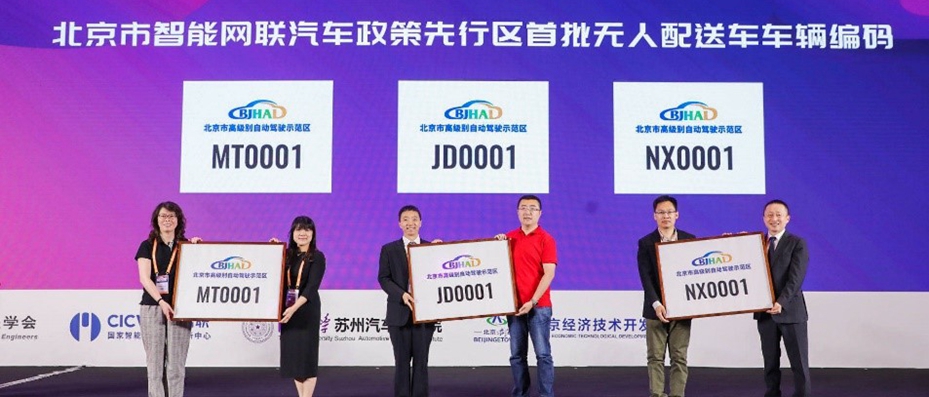
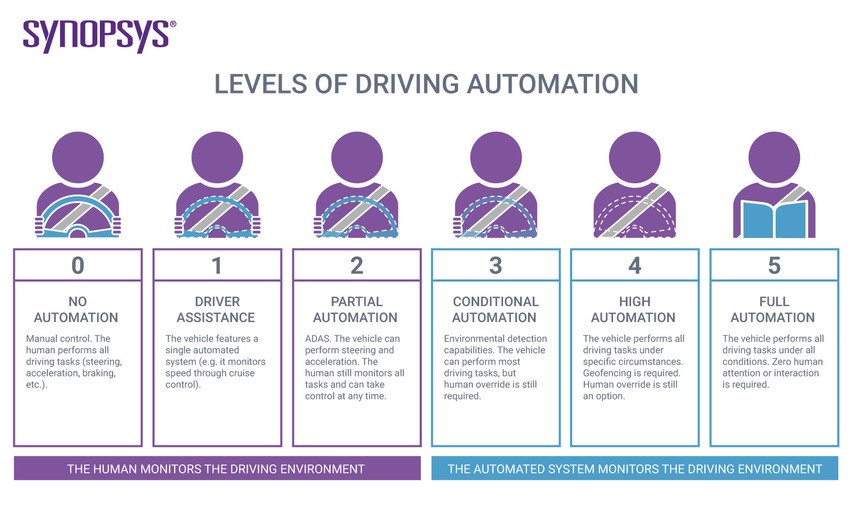
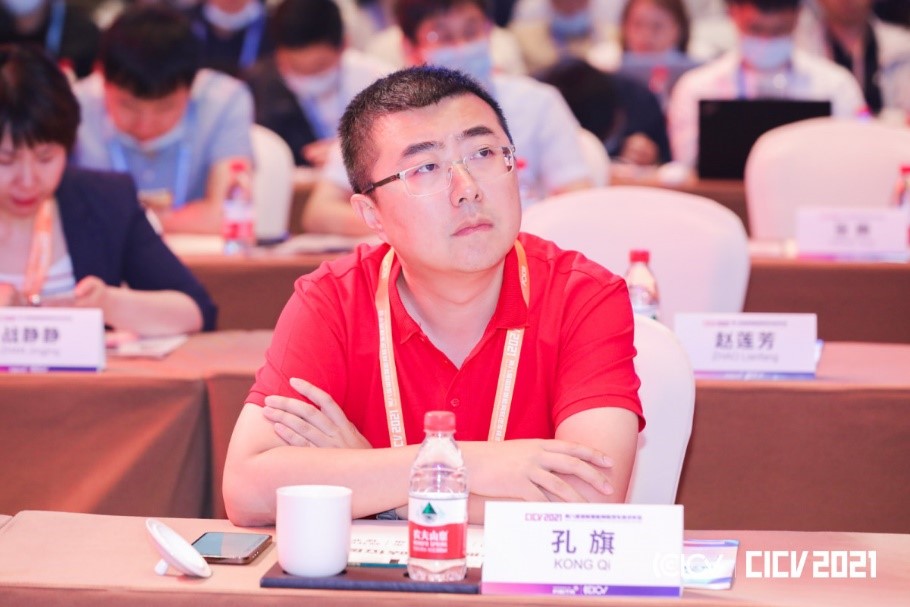
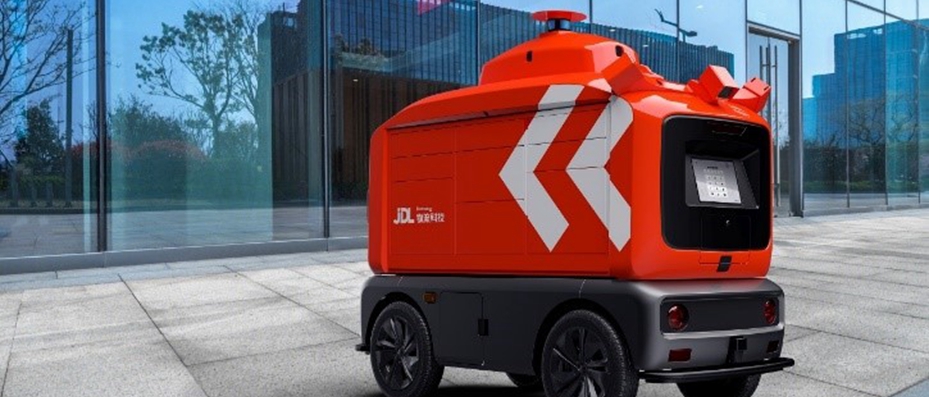
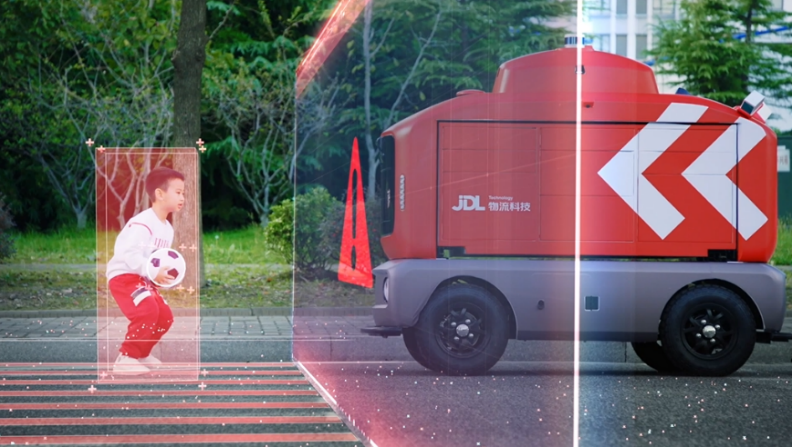
![“One of the most significant advantages of JD doing this is [the company’s] massive e-commerce scale and nationwide self-operated logistics network](https://jdcorporateblog.com/wp-content/uploads/2021/06/AV-parameters-1024x514.png)
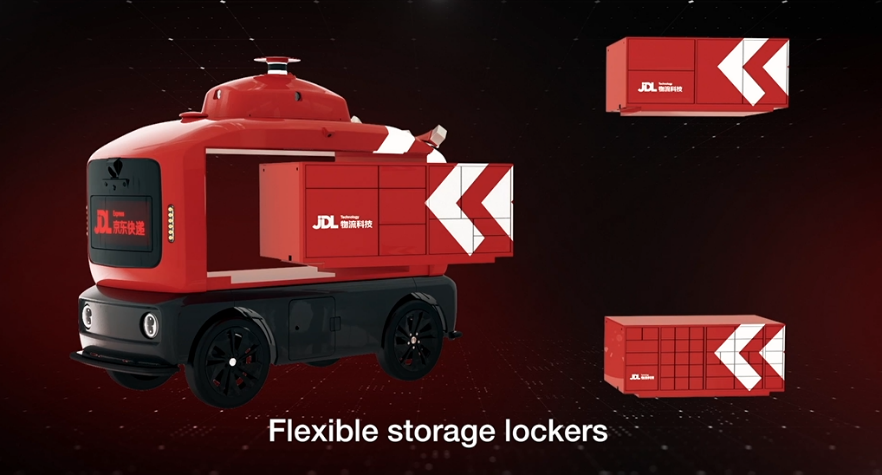
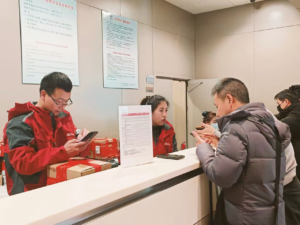 This Harbin tourism boom has also spurred a surge in sales of winter apparel. JD.com’s data indicates a rapid growth in the sales of warm clothing items such as down jackets, snow boots, and thermal underwear between January 1st and 7th. The sales growth is especially pronounced in southern provinces and cities such as Jiangsu, Zhejiang, Guangdong, Sichuan, and Shanghai. Notably, tall snow boots registered a 206% year-on-year increase in transactions, while padded cotton caps and thickened long down jackets soared by 158% and 134%, respectively. Beyond clothing, travel gear has also seen a considerable uptick, with a 98% year-on-year growth in transactions for large suitcases and travel backpacks in these southern regions.
This Harbin tourism boom has also spurred a surge in sales of winter apparel. JD.com’s data indicates a rapid growth in the sales of warm clothing items such as down jackets, snow boots, and thermal underwear between January 1st and 7th. The sales growth is especially pronounced in southern provinces and cities such as Jiangsu, Zhejiang, Guangdong, Sichuan, and Shanghai. Notably, tall snow boots registered a 206% year-on-year increase in transactions, while padded cotton caps and thickened long down jackets soared by 158% and 134%, respectively. Beyond clothing, travel gear has also seen a considerable uptick, with a 98% year-on-year growth in transactions for large suitcases and travel backpacks in these southern regions.
 JD Health Debuts at Digital Expo in Guizhou to Show Smart Products
JD Health Debuts at Digital Expo in Guizhou to Show Smart Products
